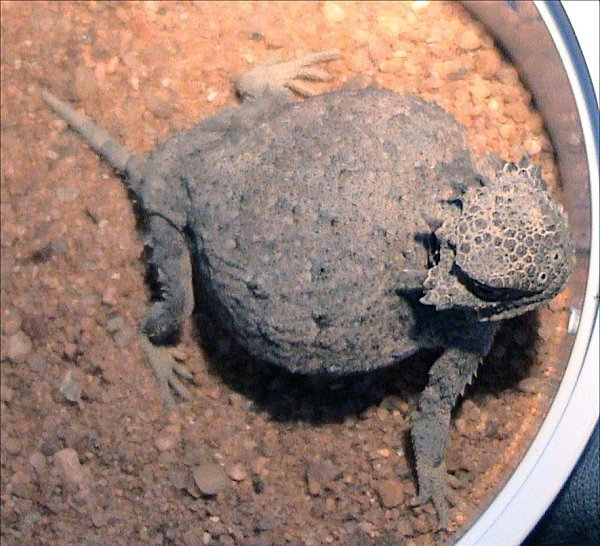Phrynosoma Modestum on:
[Wikipedia]
[Google]
[Amazon]
The roundtail horned lizard (''Phrynosoma modestum'') is one of the smaller species of horned lizard. Their specific epithet is from the Latin word ''modestum'', meaning modest or calm. They are found in the United States, in western Texas, New Mexico eastern Arizona, southeastern Colorado and eight states in northcentral Mexico where they are referred to as "''tapayaxtin''".

Herps of Texas: ''Phrynosoma modestum''Horned Lizard Conservation Society
{{Authority control Phrynosoma Reptiles of Mexico Reptiles of the United States Fauna of the Southwestern United States Reptiles described in 1852
Habitat
Roundtail horned lizards prefer rocky and sandy, semiarid habitat with sparse vegetation, near harvester ant or especially honeypot ant colonies, which is their primary diet.Description
The color of roundtail horned lizards usually reflects the color of the soil in their native habitat. Most are uniformly grey in color, but they can also be light brown, or even a pale yellow. Often, darker-colored regions occur around the neck and groin, and sometimes striping on the tail. They are short, flat, round-bodied lizards with short limbs, and small heads, which have a distinctive crest of nearly equal-length horns. Unlike other horned lizards, they lack a fringe of lateral scales and do not seek to flatten themselves to the ground to eliminate shadow; instead, they hunch their bodies into the shape of a rock for camouflage, boldly casting a shadow. Their maximum size is 7 cm (2.7 in) snout-to-vent length, and 10.5 cm (4.3 in) total length. Smith, H.M. and E.D. Brodie, Jr. (1982). ''Reptiles of North America, A Guide to Field Identification''. Golden Press. New York. pp. 126–127.
Reproduction
Roundtail horned lizards areoviparous
Oviparous animals are animals that lay their eggs, with little or no other embryonic development within the mother. This is the reproductive method of most fish, amphibians, most reptiles, and all pterosaurs, dinosaurs (including birds), and ...
, breeding and laying eggs in early summer.
References
Bibliography
*Hammerson, Geoffrey A. ''Amphibians and Reptiles in Colorado''. 2nd edition.External links
Herps of Texas: ''Phrynosoma modestum''
{{Authority control Phrynosoma Reptiles of Mexico Reptiles of the United States Fauna of the Southwestern United States Reptiles described in 1852